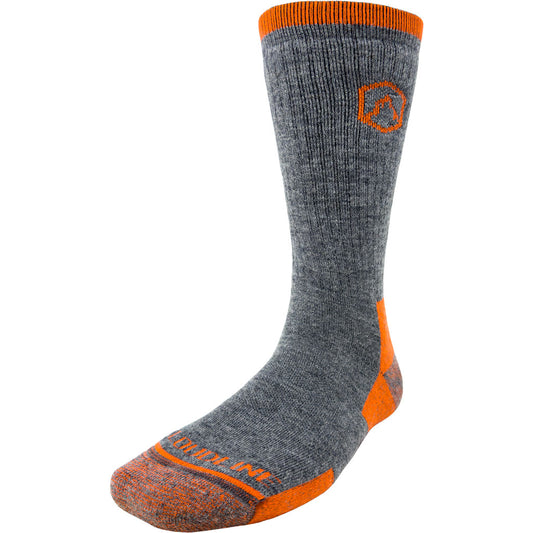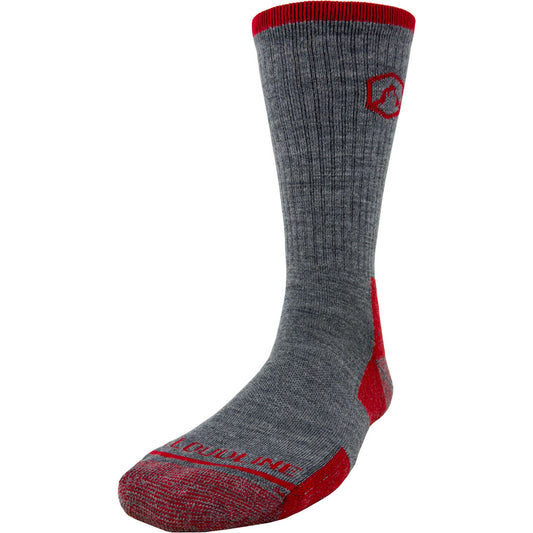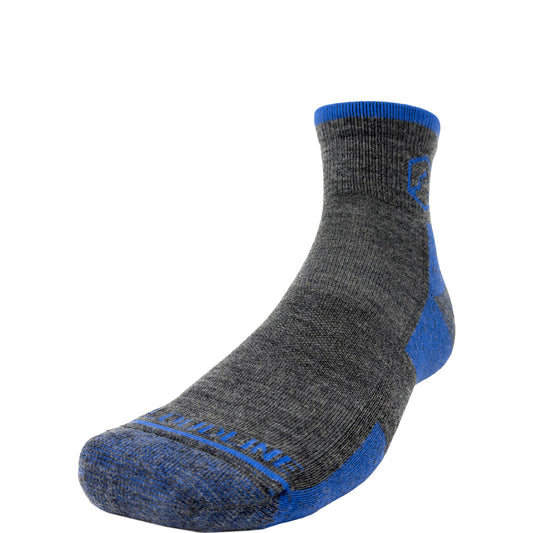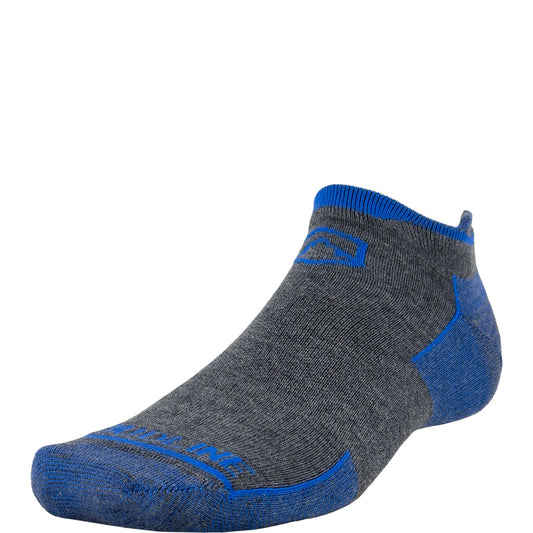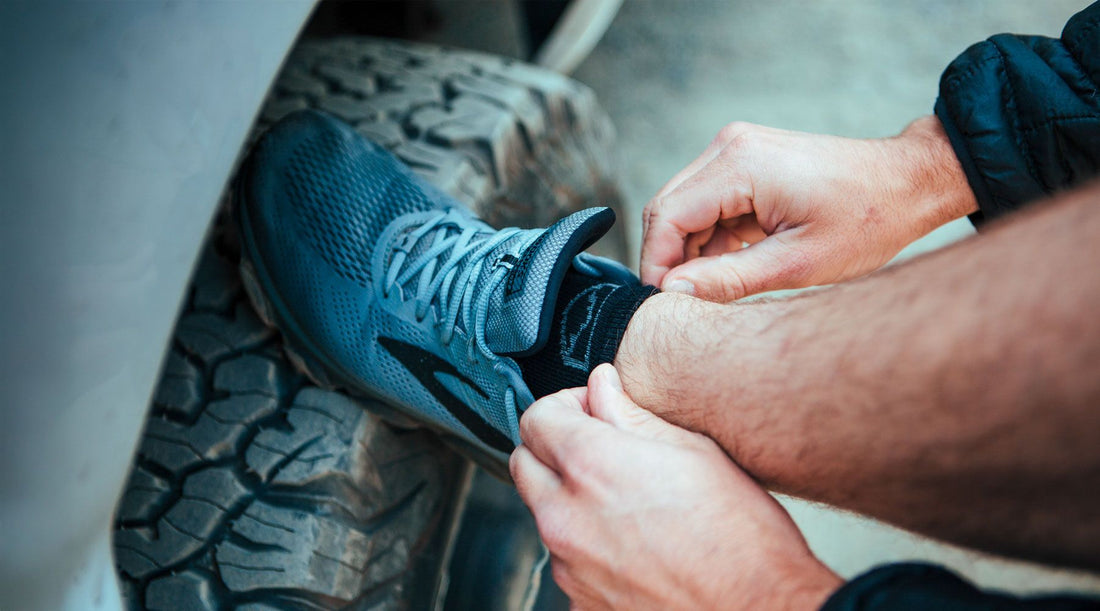
Unlock Your Best Run: Discover the Comfort & Performance of Merino Wool Running Socks
Why Merino Wool Running Socks Are a Game-Changer for Runners
Running brings a unique kind of joy. That rhythm of feet hitting the pavement, the endorphin rush, and the satisfaction of pushing your limits. But let's be honest – uncomfortable feet can turn your dream run into a nightmare faster than you can say "blister." This is where the unsung heroes of your running gear come in: your socks.
While most runners obsess over finding the perfect shoes, the right socks are equally crucial for a stellar running experience. And not just any socks – merino wool running socks. These aren't your grandpa's itchy wool socks. Modern merino wool socks are revolutionizing how runners experience comfort and performance on the trail, track, or street.
Crafted from the fine, soft fibers of merino sheep, these socks offer a constellation of benefits that synthetic alternatives simply can't match. Whether you're tackling a mountain trail or pounding city pavement, the natural properties of merino wool adapt to your feet's needs in remarkable ways.
Let's dive into why so many runners are making the switch to merino wool and never looking back. Your feet (and your running times) might thank you for this discovery.
The Science Behind Merino Wool's Superior Performance
Merino wool isn't just another material – it's a biological marvel. These fibers evolved to protect sheep in extreme temperatures, from scorching summers to frigid winters. When transformed into running socks, this natural engineering delivers exceptional benefits.
At a microscopic level, merino fibers possess a complex structure that synthetic materials can't replicate. Each fiber contains thousands of air pockets that create natural insulation and moisture management systems. These microscopic air chambers trap heat when it's cold while allowing excess heat to escape when temperatures rise – nature's own thermostat working for your feet.
The fibers also contain a waxy coating called lanolin that gives merino its remarkable moisture-wicking properties. Unlike cotton that becomes waterlogged or synthetic materials that can feel clammy, merino actively pulls moisture away from your skin, allowing it to evaporate efficiently. This translates to drier feet during long runs, substantially reducing the risk of blisters and hot spots.
Perhaps most impressively, merino wool can absorb up to 30% of its weight in moisture while still feeling dry against your skin – a property known as "hygroscopic absorption." This means even on your sweatiest runs, your merino socks continue performing at optimal levels.
The Comfort Revolution: How Merino Wool Transforms Your Running Experience
The right running socks should disappear from your consciousness during a run – no friction, no bunching, no discomfort to distract you from your stride. Merino wool running socks achieve this elusive quality through several comfort mechanisms that work synergistically.
First, there's the luxurious softness. Unlike traditional wool that can feel scratchy, merino fibers are exceptionally fine – typically measuring less than 24 microns in diameter (human hair averages 50-100 microns). This fineness creates a supremely soft touch against your skin, eliminating the itchiness associated with conventional wool.
Next comes the natural elasticity. Merino fibers can stretch up to 30% of their length before breaking and will return to their original shape afterward. This natural resilience translates to socks that hug your feet perfectly without constricting circulation or losing their shape throughout your run.
"I switched to merino wool running socks three years ago and haven't had a single blister since. They've completely changed how my feet feel during marathon training." – Sarah K., Ultramarathoner
Temperature Regulation: Your All-Season Running Companion
One of merino wool's most remarkable qualities is its ability to adapt to temperature fluctuations. This makes merino wool running socks the quintessential all-season foot covering, performing admirably whether you're running through summer heat or winter chill.
In warm conditions, merino's moisture management system continuously wicks perspiration away from your skin. As this moisture evaporates, it creates a natural cooling effect. Simultaneously, the breathable structure of the fibers allows air circulation that prevents the sauna-like environment many synthetic socks create.
When temperatures drop, merino's insulating properties shine. Those same air pockets that help cool in summer now trap warm air near your skin. Even more impressive, merino wool generates small amounts of heat through a process called "heat of sorption" – as the fibers absorb moisture, they release heat. This creates a microclimate around your feet that maintains comfort even in frigid conditions.
This thermoregulation means you can reach for the same pair of merino running socks regardless of season or weather forecast – a versatility that simplifies your gear decisions and performs reliably across diverse conditions.
Blister Prevention: The Secret Weapon for Distance Runners
For anyone who's had a promising run derailed by a painful blister, finding effective prevention becomes a priority. Merino wool running socks excel at keeping blisters at bay through multiple mechanisms that work together to protect your feet mile after mile.
Friction is blister enemy number one, and merino wool's natural properties create the perfect defense. The fibers' exceptional softness reduces abrasion against your skin, while their elasticity ensures the sock stays perfectly positioned without bunching or shifting during your run. This eliminates the rubbing that leads to hot spots and eventually blisters.
Moisture management forms the second line of defense. Wet skin blisters much more easily than dry skin, and merino's superior wicking action keeps your feet noticeably drier than other materials. By maintaining a drier foot environment throughout your run, these socks significantly reduce blister risk, especially on longer distances.
Cushioning and Support: Merino's Impact on Running Biomechanics
Beyond blister prevention, properly cushioned running socks can subtly influence your running mechanics and recovery. Merino wool socks often feature strategic cushioning zones that enhance comfort while preserving the biomechanical feedback needed for proper form.
The natural springiness of merino fibers provides gentle cushioning that absorbs impact without creating the disconnected feeling that overly padded synthetic socks sometimes produce. This allows for proper proprioception – your body's awareness of position and movement – while still protecting high-impact areas like the heel and forefoot.
Many performance merino running socks also incorporate targeted compression zones that support the arch and improve circulation. This graduated compression can reduce foot fatigue during long runs and aid in recovery afterward by promoting better blood flow.
The balanced cushioning profile of quality merino wool running socks works harmoniously with your running shoes to create an optimal environment for your feet, potentially reducing fatigue and enhancing performance on both short sprints and epic distances.
The Odor-Fighting Advantage of Merino Wool
Let's address a universal truth of running: sometimes things get smelly. Foot odor results from bacteria thriving in the warm, moist environment inside your shoes – but merino wool has a natural solution to this common problem.
Merino wool possesses intrinsic antimicrobial properties thanks to its complex protein structure and presence of lanolin. Unlike synthetic materials that can harbor odor-causing bacteria, merino fibers naturally inhibit bacterial growth. The science is fascinating: the keratin protein in wool binds with and neutralizes the compounds that cause odor.
This means you can wear merino wool running socks for multiple runs before they develop any noticeable odor – a significant advantage for multi-day adventures or travel when laundry access might be limited. Many runners report being able to wear their merino socks for several consecutive runs before washing becomes necessary.
Sustainability Factors: Why Eco-Conscious Runners Choose Merino
Beyond performance benefits, merino wool represents a more sustainable choice for environmentally conscious runners. As a natural fiber, merino wool is renewable, biodegradable, and requires fewer resources to produce than petroleum-based synthetic alternatives.
Merino sheep produce a new fleece annually, making the wool a naturally renewable resource. At the end of their lifespan, merino wool products will biodegrade completely in soil within a few years, unlike synthetic fabrics that can persist in landfills for centuries.
The environmental footprint extends to care as well. Merino wool running socks require less frequent washing than synthetics due to their odor-resistant properties, saving water and energy throughout their lifetime. When washing is necessary, they typically require lower temperatures than other materials, further reducing their environmental impact.
For runners who want their gear choices to align with their environmental values, merino wool offers performance without compromise – keeping both feet and conscience comfortable.
Choosing the Right Merino Wool Running Socks
Not all merino wool running socks are created equal. Finding your perfect pair involves considering several key factors that influence how they'll perform for your specific running style and preferences.
Thickness and Cushioning Options for Different Running Styles
Merino wool running socks come in various thicknesses to suit different running conditions and personal preferences. Understanding these options helps you select the ideal sock for every run in your training schedule.
Ultralight and lightweight options provide minimal cushioning and maximum breathability, making them ideal for hot weather running or racing when you want minimal material between your foot and shoe. These thinner socks offer excellent ground feel for runners who prefer more sensory feedback.
Medium-weight socks strike a balance between cushioning and breathability, making them versatile choices for everyday training runs across multiple seasons. The moderate cushioning provides impact protection without excessive bulk.
Heavyweight options offer maximum cushioning and insulation, perfect for cold weather running or ultra-distance events where additional padding becomes crucial. These thicker socks provide substantial impact absorption for protecting feet during extended efforts.
| Sock Weight | Best For | Cushioning Level | Season |
|---|---|---|---|
| Ultralight | Racing, hot weather | Minimal | Summer |
| Lightweight | Speed workouts, warm weather training | Light | Spring/Summer |
| Medium | Everyday training, versatile conditions | Moderate | All seasons |
Care and Maintenance: Maximizing Your Merino Investment
Quality merino wool running socks represent an investment in your running comfort and performance. With proper care, this investment pays dividends through exceptional longevity – often outlasting multiple pairs of running shoes.
Despite their durability, merino wool requires slightly different care than synthetic fabrics. Following some simple guidelines will keep your socks performing at their best run after run:
- Wash in cool or lukewarm water (30-40°C/85-105°F) using mild detergent
- Avoid bleach, fabric softeners, and harsh chemicals that can damage the natural fibers
- Turn socks inside-out before washing to remove accumulated skin cells and debris
- Air dry instead of using a dryer when possible; if you must use a dryer, use low heat
- Store clean and completely dry to prevent moth damage
Many premium merino wool running socks now include small percentages of synthetic fibers like nylon or elastane to enhance durability in high-wear areas while maintaining merino's performance benefits. These blended socks often offer the best combination of natural properties and lasting resilience.
Washing Tips to Extend the Life of Your Merino Running Socks
The way you wash your merino wool running socks significantly impacts their lifespan. A few specialized approaches can extend their durability considerably beyond standard care methods.
Consider dedicating a separate mesh laundry bag exclusively for your performance merino socks. This simple step prevents them from rubbing against rougher garments during washing and protects them from catching on zippers or velcro that might cause pilling or tears.
For runners who frequently participate in muddy trail runs, a preliminary rinse before washing can prevent dirt particles from becoming embedded in the fibers. Simply rinse your socks in cool water until it runs clear before adding them to your regular wash.
If you notice your merino socks beginning to lose their elasticity after extended use, try soaking them in cool water with a tablespoon of hair conditioner for 30 minutes before rinsing thoroughly. This can help rejuvenate the natural elasticity of the wool fibers and extend the functional life of your favorite pairs.
Frequently Asked Questions About Merino Wool Running Socks
As runners discover the benefits of merino wool socks, common questions arise about their performance, value, and specific use cases. Here are answers to the questions we hear most frequently:
Are merino wool running socks worth the higher price?
When comparing the price tag of premium merino wool running socks to basic synthetic or cotton options, the difference can seem substantial. However, considering their extended lifespan, reduced blister incidence, and superior comfort, most dedicated runners find merino socks deliver exceptional value over time.
Quality merino wool running socks typically last through 300-500 miles of running before showing significant wear – often outlasting multiple pairs of running shoes. When you factor in fewer replacements and potentially fewer blister treatments or foot issues, the cost-per-mile often proves lower than less expensive alternatives.
Additionally, the versatility of merino wool socks across seasons and conditions means you may need fewer specialized pairs for different running scenarios, further enhancing their value proposition for serious runners.
Can merino wool running socks really prevent blisters?
While no sock can guarantee complete blister prevention in all circumstances, merino wool socks dramatically reduce blister risk through multiple mechanisms. Their moisture management keeps feet drier, their softness reduces friction, and their natural elasticity prevents bunching – addressing the primary causes of blister formation.
Many runners who previously suffered chronic blister issues report significant improvement or complete resolution after switching to quality merino wool running socks. This is particularly notable during long-distance events where cumulative friction and moisture would typically create blister-prone conditions.
For maximum blister prevention, pair merino wool socks with properly fitted running shoes and consider applying anti-chafing products to persistent problem areas before particularly challenging runs.
Ready to experience the difference for yourself? Cloudline's premium merino wool running socks are crafted in the USA from the finest yarns and backed by a lifetime guarantee. Your feet deserve this upgrade – and your personal records might benefit too.

